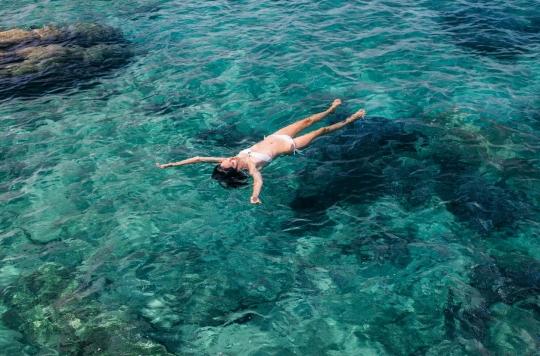In 2018, 1,649 drownings were recorded in France, 25% of which were fatal. A worrying phenomenon that particularly affects children under 13 years old. What are the right steps to take? A manager of the French Swimming Federation enlightens us.

- Swim in the areas provided for this purpose and during monitoring hours.
- Keeping both eyes on the children when swimming, and sharing this moment with them allows you to react more quickly in the event of a problem.
- Do not overestimate your strength, avoid swimming alone.
- If you are dry and have been exposed to the sun for a long time, do not enter the water violently, it can trigger a hydrocution. Do not swim if you have consumed drugs and/or alcohol.
It’s a fear that few people know how to deal with. In 2018, the number of drownings recorded in France jumped by 30% compared to the previous survey in 2015. Of the 1,649 facts listed, 600 concern children under 13 years old. A phenomenon not so well known as that. “Some think that during a drowning, people gesticulate or shout, this is false. Drowning can be quick and silentattests Vincent Hamelin, head of the practice development department at the French Swimming Federation. In general, the person tries to breathe and is unable to raise the alarm.
The main swimmers at risk are children and seniors. In the 2018 drowning survey conducted by Public Health France, children under 6 accounted for 28% of accidental drownings and 9% of deaths, while those over 65 accounted for 22% of drownings and 35% of deaths. . Misadventures and avoidable deaths most of the time. “To avoid the ‘I thought it was you’, you must clearly designate an adult responsible for supervising the children.recommends Vincent Hamelin. Then I take up the slogan of the Ministry of Sports: ‘If you care about them, don’t take your eyes off it’.” So that the duty is not too tedious, Public Health France advises that the adult in charge of supervision participates in the bathing in order to be able to be close enough to intervene quickly. The public body suggests teaching children very early on how to swim, and insisting on adults who do not know how.
Regarding the prevention of drowning in seniors, another mechanism is at work. “Some people drown in an environment they know well. Often, they remember being able to swim a certain distance as a child and decide to reproduce this journey in the water without realizing that their physical capacity has since diminished.regrets Vincent Hamelin. In some coastal departments, we notice that it is ‘locals’ who drown, because they come outside opening hours [et de surveillance de la plage, NDLR] to avoid tourists. However, in case of discomfort… it is dramatic.”
Avoid danger
Bathing professionals point out another obvious fact: you have to swim in supervised areas. “If the swimming area is delimited by blue flags, it means that outside this area there may be a danger, but that, some swimmers are not aware of it”, breathes Vincent Hamelin. One of the dangers can be the presence of a baïne, a sandy formation that creates a bay protected by waves thanks to the presence of sandbanks. However, these protections have a thin passage which when the water recedes can suck swimmers in and carry them out to sea. There, the danger lies in panicking, swimming against the current until exhaustion. “Consult the prosinsists the employee of the Swimming Federation. When you arrive on a body of water, the first thing to do is to go to the lifeguard station to find out the forecast weather forecast and the tide times. If the bathing is arranged, it means that there are no dangerous water movements.”
Finally, the French Swimming Federation recommends avoiding “aberrant” behavior, such as the consumption of alcohol or narcotics which impairs the ability to swim, or rushing into the water after long exposure to the sun. “Do not run and dive head because there is a risk of hydrocution!” he warns. The brutal immersion of the hot body in cold water can lead to a violent narrowing of the diameter of the blood vessels causing a strong reduction in the irrigation of the brain – which can lead to a loss of consciousness – and/or to cardio-circulatory arrest leading to “out of water” drowning, a phenomenon that most often occurs in the natural environment — sea, lake, river — between noon and 4 p.m.To avoid hydrocution, you must gradually enter the water by getting wet”, recalls Vincent Hamelin.
If you feel bad in the water, here is the correct procedure: “Mlie on your back like a starfishhe explains. Catch your breath and sound the alarm.” This swimming professional recommends taking an open water swimming buoy in the natural environment. “It’s very practical to leave your keys or your phone there.says Vincent Hamelin. It also allows you to have a point of support in case of fatigue and in the event of a problem to use a built-in whistle to sound the alert.” Enough to cross the waves in complete safety.
.
















